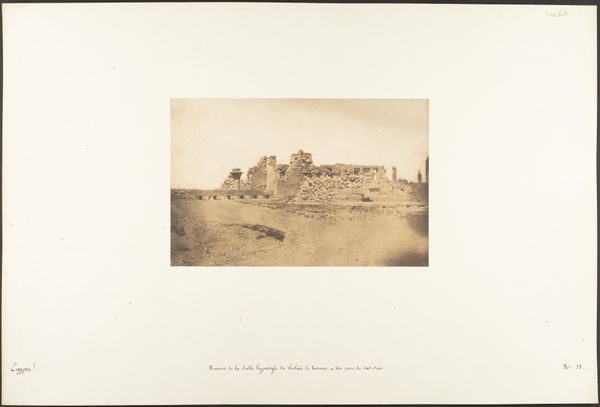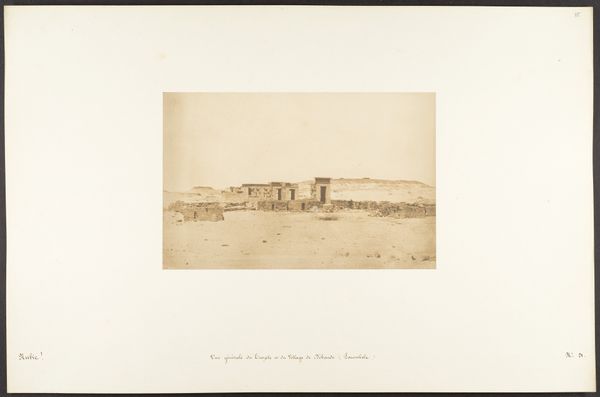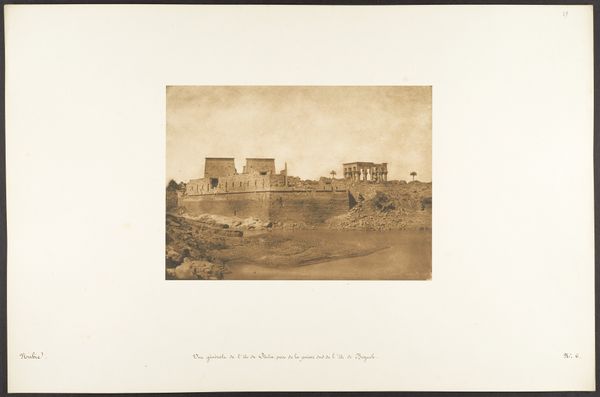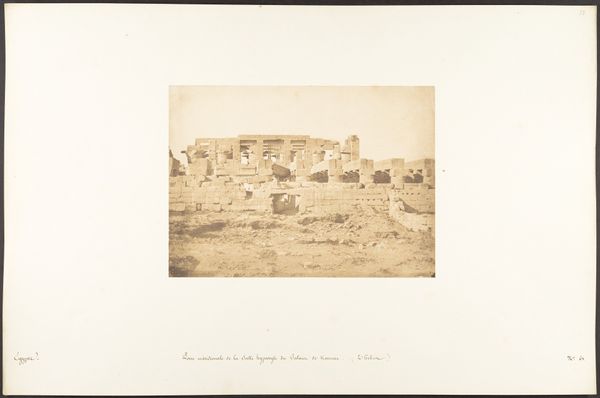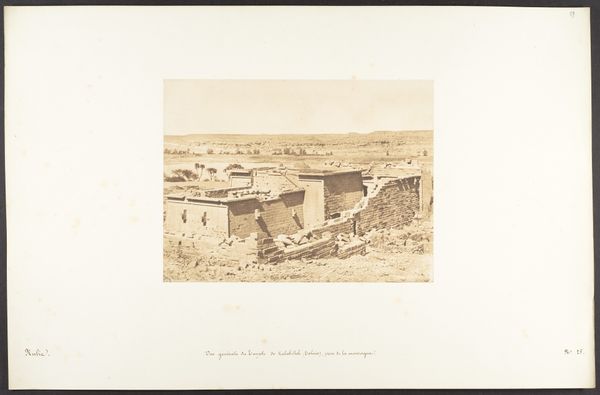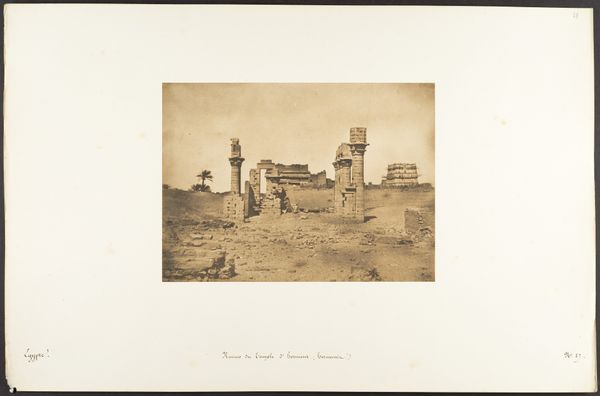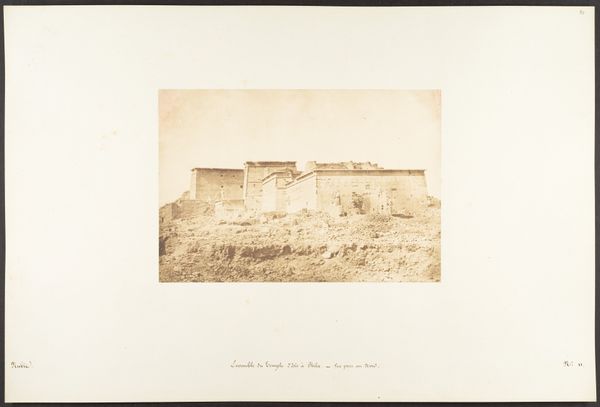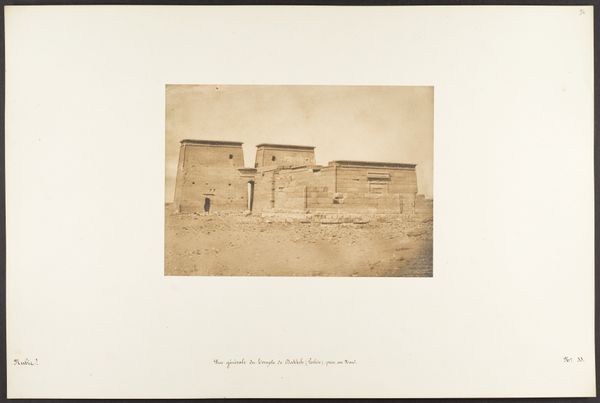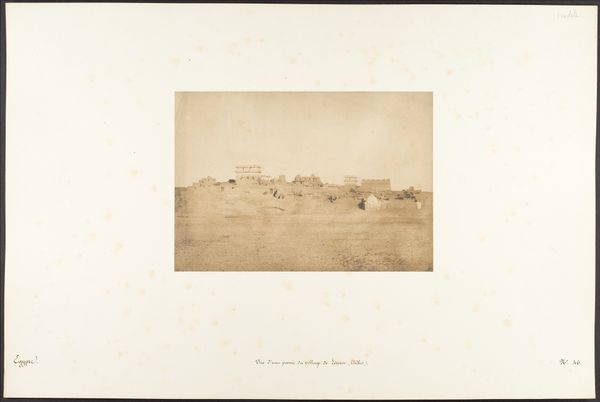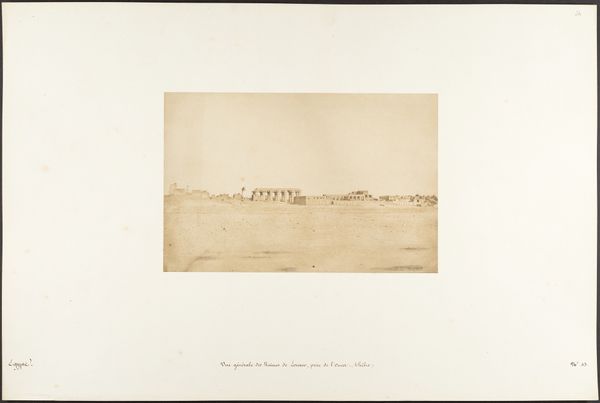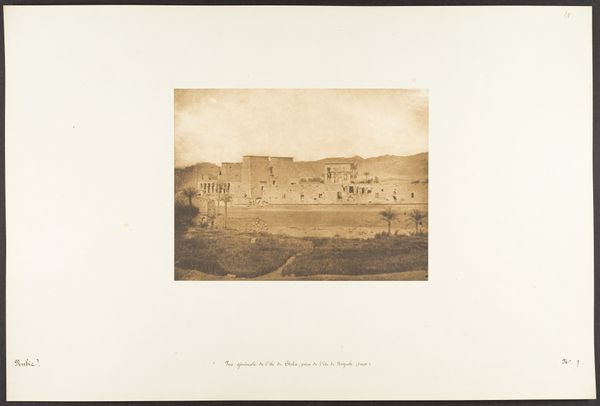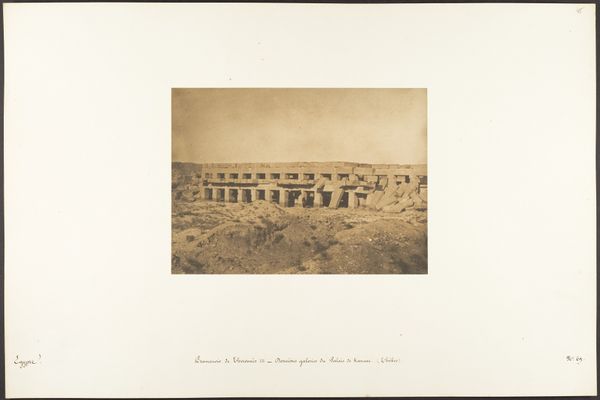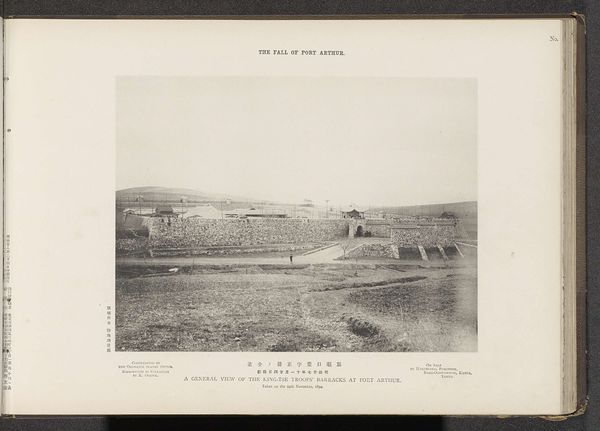
Habitation de l'équipage de l'allège de Luxor, bâtie sur la terrasse du Palais 1849 - 1850
0:00
0:00
daguerreotype, photography, architecture
#
landscape
#
daguerreotype
#
ancient-egyptian-art
#
photography
#
architecture
Dimensions: Image: 5 13/16 × 8 9/16 in. (14.7 × 21.7 cm) Mount: 12 5/16 × 18 11/16 in. (31.2 × 47.5 cm)
Copyright: Public Domain
Editor: This is "Habitation de l'équipage de l'allège de Luxor, bâtie sur la terrasse du Palais," a daguerreotype by Maxime Du Camp, taken around 1850. I find it quite fascinating, how the photographic process renders this architectural structure and landscape in a monochromatic scheme that highlights form. What formal elements strike you in this composition? Curator: Notice the linear arrangements. The horizontal stacking of the building, stratified as it were, creates a receding effect. Semiotically, we can explore the structural relationship between the built and natural environments; observe how the sharp lines of the architecture contrast with the soft blur of the sky. Editor: The contrast is really interesting, making me wonder if the artist was attempting to communicate any tension, or harmony between the man-made and nature. Curator: Precisely. What we find compelling is that Du Camp allows for gradations of tone. He skillfully manages the transition between the solid geometric shape of the building, the landscape it's built upon, and what appear to be, judging from their relative imprecision, distant foliage. Do you notice any spatial devices employed by Du Camp? Editor: The receding horizon line certainly contributes to a sense of depth, as does the variation in tone, creating light and shadow...almost a sense of three-dimensionality despite being a two-dimensional photograph. Curator: Exactly! He exploits the limitations of the daguerreotype, pushing the medium's boundaries and highlighting the compositional structure itself, reminding us of the inherent visual language present in every photograph. Editor: I see. I’m struck by how focusing on formal properties helps me appreciate this work beyond just its historical subject matter. Curator: Indeed. Examining the arrangement of form, light, and material helps us to more critically analyze and value this innovative work by Du Camp.
Comments
No comments
Be the first to comment and join the conversation on the ultimate creative platform.
